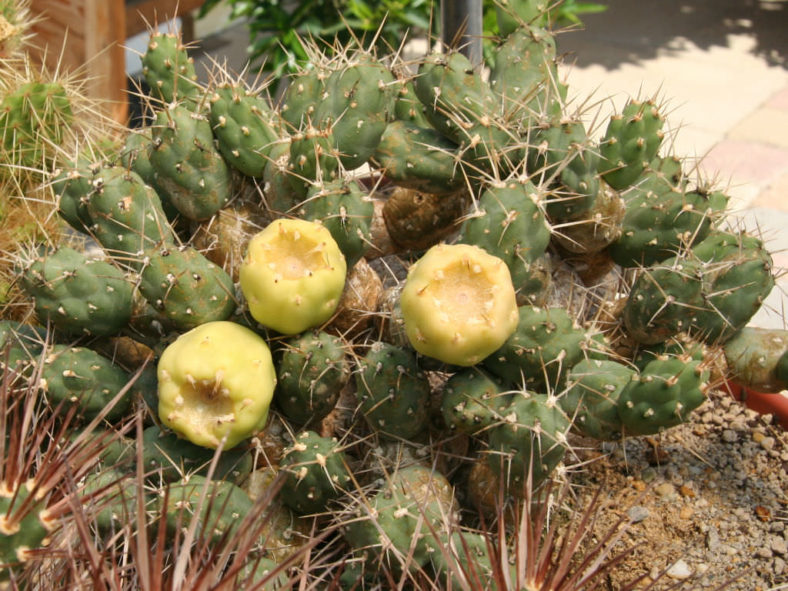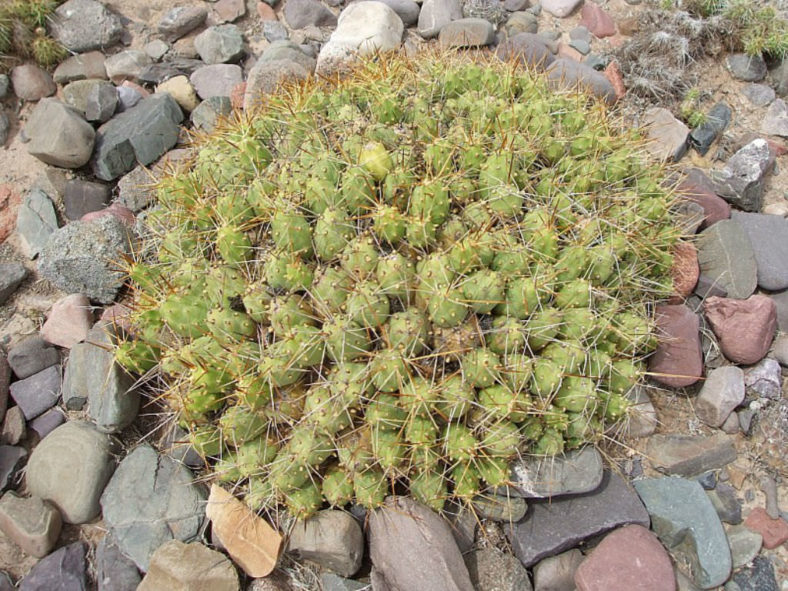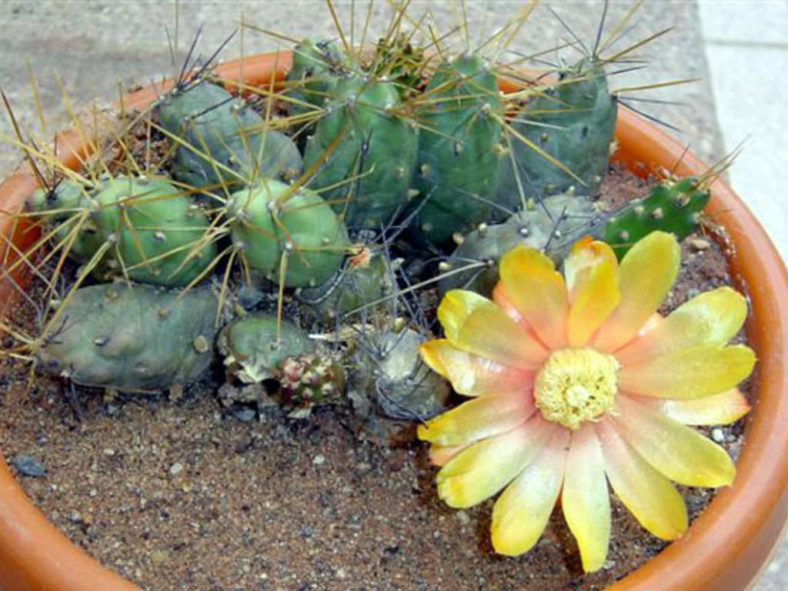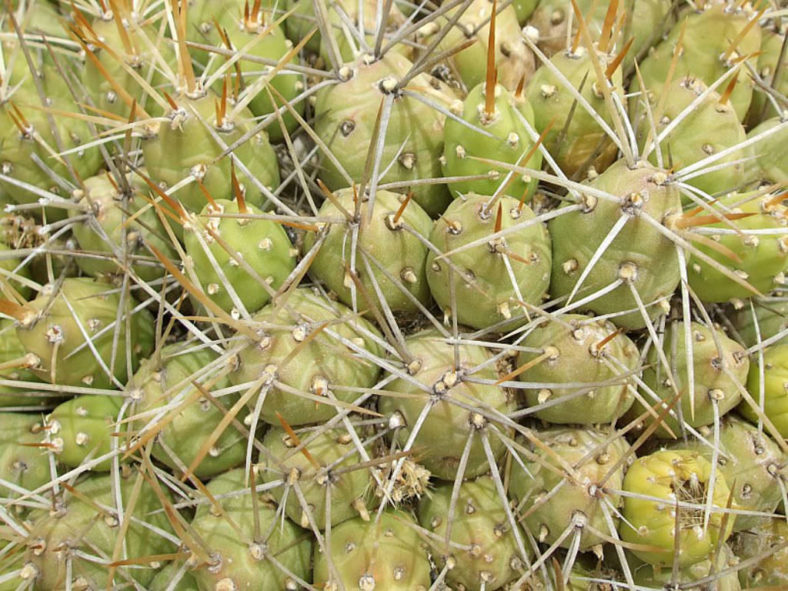Scientific Name
Cumulopuntia boliviana (Salm-Dyck) F.Ritter
Synonym(s)
Austrocylindropuntia boliviana, Cumulopuntia boliviana subsp. boliviana, Maihueniopsis boliviana, Opuntia boliviana, Tephrocactus bolivianus
Scientific Classification
Family: Cactaceae
Subfamily: Opuntioideae
Tribe: Austrocylindropuntieae
Genus: Cumulopuntia
Origin
Cumulopuntia boliviana is native to the Altiplano of Argentina, Bolivia, Chile, and Peru.
Description
Cumulopuntia boliviana is a cactus that forms dense, often large cushions of green stem segments armed with yellow to reddish-brown spines. It spreads up to 3.3 feet (1 m) or more in diameter. The stem segments are egg-shaped to elongate, tuberculate, and can measure up to 3 inches (7.5 cm) long and 1.6 inches (4 cm) in diameter. The tubercles are initially well-defined, later obscure, and mostly located on the upper portions of the segments. The spines are erect to somewhat spreading and can grow up to 4 inches (10 cm) long. Each areole bears 1 to 10 spines, sometimes with a few bristles.
The flowers are yellow, rarely orange, pink, or red, with a bristly pericarpel above, and can reach a length of 2 inches (5 cm) and a diameter of 2.4 inches (6 cm). The fruits are fleshy, green to yellowish, usually subspherical, and typically spineless but sometimes with a few bristles. They can grow about 0.8 inches (2 cm) long.

Hardiness
USDA hardiness zones 8a to 11b: from 10 °F (−12.2 °C) to 50 °F (+10 °C).
How to Grow and Care
Although the large variety of species within the Opuntia genus means that different types of prickly pears may require slightly different care, all are desert cacti that need lots of sun, plenty of light, and very little water. So, if you live in a hot, arid area, these plants can generally be planted outside, left alone, and enjoyed.
Although Opuntia can grow just fine in a garden, it can also be grown in pots. To repot, ensure the soil is dry, remove the pot, and remove the old soil. After treating any cuts with fungicide, place the prickly pear in a new pot and backfill it with potting soil. As with a new cutting, make sure not to water a newly repotted prickly pear for a brief period to avoid rotting its roots.
See more at How to Grow and Care for Opuntia.
Links
- Back to genus Cumulopuntia
- Succupedia: Browse succulents by Scientific Name, Common Name, Genus, Family, USDA Hardiness Zone, Origin, or cacti by Genus
Photo Gallery
Click on a photo to see a larger version.


